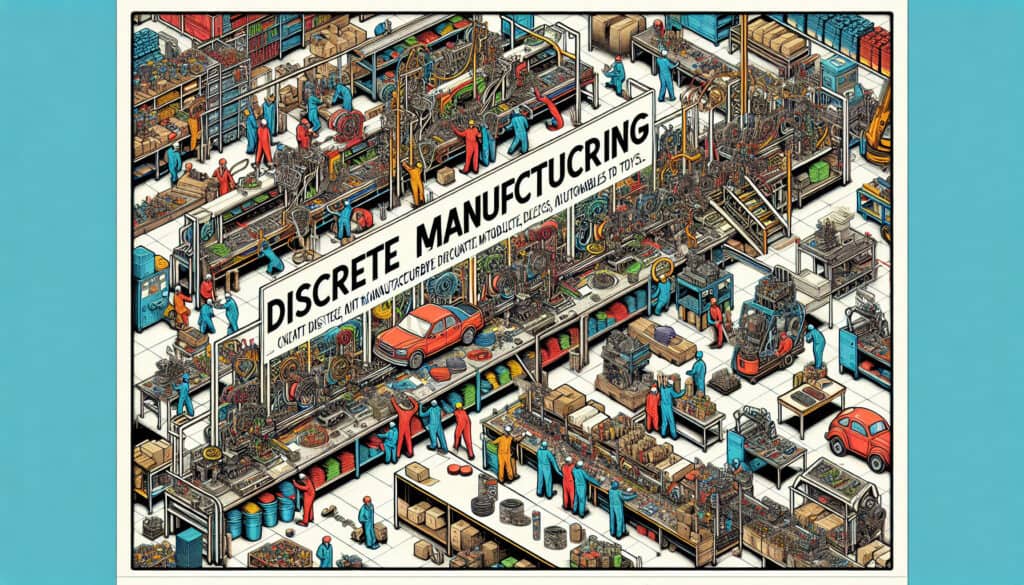A 制造业 process that produces distinct, countable items.
- 方法: 工程, 人体工程学
Discrete Manufacturing

Discrete Manufacturing
- 精益制造, 制造业, 工艺优化, 产品设计, 产品开发, 生产效率, 质量控制, 质量管理
目标
如何使用
- This term describes the production of individual finished goods, such as cars, computers, toys, or airplanes. Each unit can be individually identified and counted. It is contrasted with process manufacturing (e.g., chemicals, food).
优点
- Allows for the production of identical, standardized units; processes can be easily monitored and controlled on a per-unit basis.
缺点
- Can be less flexible for producing customized items in low volumes; assembly line balancing can be a complex challenge.
类别
- 精益西格玛, 制造业
最适合:
- Production of distinct, countable products like automobiles, electronics, or appliances.
Discrete manufacturing is prevalent in industries such as automotive, electronics, consumer goods, and aerospace, where individual products require precise specifications and quality control. In these sectors, the application of discrete manufacturing methodologies can be seen in assembly lines that leverage just-in-time (JIT) principles. This approach benefits from the ability to produce personalized or custom units while maintaining efficiency, enabling manufacturers to react promptly to market demands or customer specifications. Throughout the product development phases, from design to prototyping and mass production, teams comprising engineers, designers, quality assurance specialists, and project managers collaborate to refine the production process and ensure scalability and adaptability. Techniques like 计算机辅助设计 (Computer-Aided Design) and CAM (Computer-Aided Manufacturing) are typically utilized to enhance product design and facilitate manufacturing processes. Quality management systems are implemented to monitor each manufacturing stage to ensure compliance with industry standards and reduce the likelihood of defects. With the integration of Industry 4.0 technologies, such as 物联网 and automation, manufacturers can enhance their operational efficiencies, providing real-time data on production metrics, thus allowing for informed decision-making and continuous improvement. Targeted markets for discrete manufacturing include sectors where customization and batch production are essential, such as in high-tech electronics, luxury automotive components, and specialized machinery, leading to innovations in product capabilities and enhanced customer satisfaction.
该方法的关键步骤
- Define product specifications and requirements.
- Develop design concepts and prototypes.
- Conduct design reviews and evaluations.
- Finalize detailed engineering designs.
- Establish production processes and workflows.
- Implement quality control measures.
- Begin production runs and monitor output.
- Perform regular inspections and testing.
- Adjust processes based on feedback and results.
- Document production changes and improvements.
专业提示
- Implement advanced data analytics for real-time monitoring of production metrics to enhance decision-making.
- Utilize modular design principles to facilitate easier assembly and maintenance, allowing for flexible production lines.
- Incorporate iterative prototyping and testing to rapidly respond to design changes and customer feedback, reducing time-to-market.
历史背景
1949
1950
1950
1960
1960
1960
1960
1940
1950
1950
1958
1960
1960
1960
1960
(如果日期不详或不相关,例如 "流体力学",则对其显著出现的时间作了四舍五入的估计)。















相关文章
主生产计划(MPS)
大规模定制
营销漏斗
营销审计
MAPO 指数(医院病人的移动和援助)
制造资源计划(MRP II)